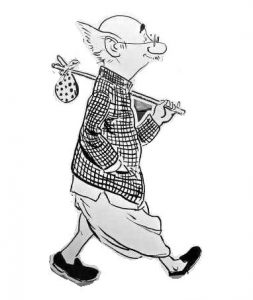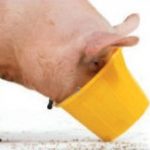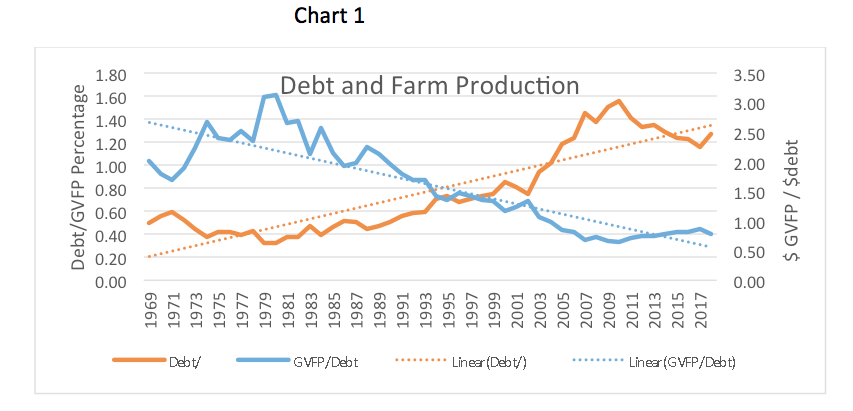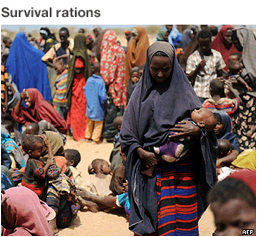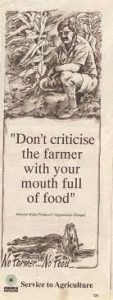 There was a car sticker around many years ago which said, “Don’t criticise farmers with your mouth full”. That sticker is truer today than it was then and just as true long before car stickers were the fashion.
There was a car sticker around many years ago which said, “Don’t criticise farmers with your mouth full”. That sticker is truer today than it was then and just as true long before car stickers were the fashion.
Some of us have been fortunate to have lived through and been part of the last half century or so of agriculture. Farming today is unrecognisable to what it was when I went to college in the early 60s and even more so looking back back at the fifties.
But it is in the last fifty years or so that I believe an agricultural revolution has taken place and it has gone unrecognised by many of today’s farmers who have inherited the past and totally unappreciated by the happy, unaware shoppers as they wander round their supermarket filling their trolleys.
So why the Protests?
Militant activists around the world consider farmers to be fair game. Mobs, of vegans and anti GM demonstrators often supported by the left wing press, believe it is their ‘right’ to enter a farmer’s premises to damage crops, ‘liberate’ stock, daub graffiti and generally cause chaos. They do this without any care or concern regarding the financial loss incurred by and the trauma caused to, those who feed them and the world. Then they go home, take off their makeup and uniforms, have a feed and go to bed replete.
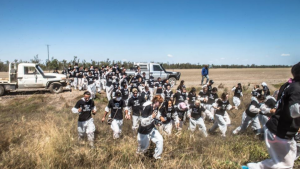
There are those who believe farmers do not care for their land but they are not farmers themselves. There are those who believe that all crop protection chemicals are bad and that low input organic farms can produce as much as conventional farms, yet they cannot present the evidence and they also go to bed replete.
Over the last sixty years as the population of the world has doubled and the arable land has halved, farmers and their scientists have fed the world to abundance; so isn’t it time we all said, ‘Thank you’?
oOo

Do you remember or have you ever heard of Paul Ehrlich the American biologist of fifty years ago?
In 1970, Ehrlich in his book ‘The Population Bomb’ predicted the end of the world as we knew it.
He was not the first in the modern era to make that prediction. Bible thumpers on a soap box in the park have mostly disappeared, mainly to avoid abuse for being Christian and the world is poorer for this loss of free speech.

There are new religions these days and they are indoctrinating the young and the gullible. Extinction Rebellion leads the pack convincing many young people that the world will end within a decade due to man-made global warming. They encourage the young into civil disobedience to ‘change the world and save it from Armageddon’ and they show no remorse when those same kids suffer anxiety and depression and need medication.
Then the world leaders at Davros and the United Nations invited 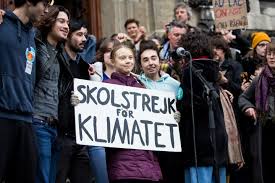 the modern day St Joan of Arc, Greta Thunberg to talk to them about the end of the world and they sat at her feet enthralled by her wisdom. ‘How could a 14 year old have such wisdom’, they asked.
the modern day St Joan of Arc, Greta Thunberg to talk to them about the end of the world and they sat at her feet enthralled by her wisdom. ‘How could a 14 year old have such wisdom’, they asked.

Before poor Greta the world was held in wonder by that Ringmaster of Barnum and Bailey’s circus, Al Gore, the American politician — the man who received the Nobel Prize by telling lies about the climate and predicting how we are all doomed because of our past excesses. Gore is the man who wrote the script to his fictitious film ‘An Inconvenient Truth’ while flying round the world in his private jet and resting in one of his mansions, with all the lights on.
When he was proven wrong he showed no remorse. He had made his money.
Ehrlich, however, was the first to predict that the world would end because millions would die of starvation and what’s more he claimed, there was nothing we could do about it apart from what he called employing ‘population control’.
This is the Prologue from Ehrlich’s book ‘The Population Bomb’.
The battle to feed all of humanity is over. In the 1970s and the 1980s hundreds of millions of people will starve to death in spite of any crash programmes embarked upon now. At this late date nothing can prevent a substantial increase in the world death rate, although many lives could be saved through dramatic programs to “stretch” the carrying capacity of the earth by increasing food production and providing for a more equitable distribution of whatever food is available. But these programs will only provide a stay of execution unless they are accompanied by determined and successful efforts at population control. Population control is the conscious regulation of the numbers of human beings to meet the needs not just of individual families, but of society as a whole.
Nothing could be more misleading to our children than our present affluent society. They will inherit a totally different world, a world in which the standards, politics, and economics of the past decade are dead. As the most influential nation in the world today, and its largest consumer, the United States cannot stand isolated. We are today involved in the events leading to famine and ecocatastrophe; tomorrow we may be destroyed by them.
 In the last fifty years world agriculture has shown just how wrong Ehrlich was. The food producers of this world, the farmers, led, aided and abetted by some of the best scientists in the world are currently producing enough food to feed ten billion people or one and a half times more food than we need.
In the last fifty years world agriculture has shown just how wrong Ehrlich was. The food producers of this world, the farmers, led, aided and abetted by some of the best scientists in the world are currently producing enough food to feed ten billion people or one and a half times more food than we need.
No other industry can match the startling performance of world agriculture and its farmers but that does not mean that the world can be complacent and sit back on its laurels. The world is changing as we shall see and the challenges will be just as great in the next half century as they have been in the last.
In the last fifty years meat production has increased by ~ 300% and cereals by ~180%. Over the same period the increases in the yields of all foods has been massive, from tomatoes to bananas to wheat and corn.
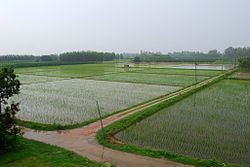
Plant breeders led by the example of Nobel Laureate, Prof Norman Borlaug in the 1960s, have achieved what Ehrlich thought impossible. Borlaug and his team produced new and higher yielding varieties of wheat and corn and farmers grew them. It became known as the Green Revolution and it transformed agriculture from America to India to Australia and Europe and all places in between.
Better yielding crops and pastures have fed the world to abundance. Explore the link for some amazing performances.
But we have a problem — They are not making any more Land.
The problem is that it is not going to get any easier to keep on feeding the ever growing world population, even though we are now producing sufficient food to feed the projected peak in world population of around 9 billion in about sixty years. We have a few real problems on the horizon, which could affect food production.
To start with world isn’t getting any bigger. Urban sprawl, desertification and salinisation are eating up arable land and that is going to make feeding the world a little more difficult in the future. This is how difficult.
First of all, what do we mean by Arable Land?
Arable land is the land under temporary agricultural crops (multiple-cropped areas are counted only once), temporary meadows for mowing or pasture, land under market and kitchen gardens and land temporarily fallow (less than five years). The abandoned land resulting from shifting cultivation is not included in this category. Data for ‘Arable land’ are not meant to indicate the amount of land that is potentially cultivable.”
Arable land in the World now and in the future.
If I were to tell you that by 2050 there will less than 0.18 of a hectare of arable land for every person on earth on which to grow their food, what would you think? Would you believe me? You’d better, because it is true.

A hectare is 10,000 M2. Measure it out, 1800 square metres is about a quarter of a soccer pitch. By 2050 you or the farmers of the world will have less than that area on which to grow ALL the food you need for a year. We don’t know how much is less.
That is all the land that will be available to grow all the cereals and vegetables you need for a year. Some of the grain will go to feeding livestock like hens and cows for milk and maybe for a beef animal(s) and don’t forget the cereals for the grog and the cotton for your clothes. Do you think you could do it on a quarter of a soccer pitch?
Will the people thrive in 2070?
In 1960 there was 0.361 of a hectare available for every person on earth, in 2018 it had dropped to 0.184 ha, so the available arable area to grow your food has about halved in the last fifty years. Will the area halve again in the next 60 years? We don’t know.
It gets worse. Twenty percent of the current arable area is irrigated, but 30 million hectares of that land is affected by salinisation and a further 80 million hectares affected by water logging.
The population of the world in 1960 was ~3 billion in 2019 it was ~7 billion and predicted to go to ~9 billion plus when it plateaus in about 2064.
So, the population of the world has doubled and the arable area has about halved in about 60 years and most 0f us have been fed to abundance — that is what our scientists and farmers have achieved.
In spite of that achievement globally, about 8.9% of the world’s population — 690 million people — go to bed on an empty stomach each night. Since 2014, the number of people affected by hunger has been slowly on the rise. If it continues at this rate, it’ll exceed 840 million by 2030.
There is no shortage of food, in fact we grow too much for our population so we throw away and waste an enormous amount. Ironically, obesity and diabetes are now the scourge of the Developed World, both ailments can be caused by eating too much of the wrong foods.
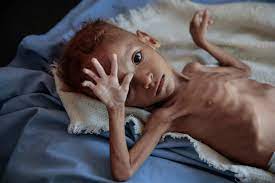
The cause of of hunger and starvation in this world is mainly war, but alarmingly there is an increase in the number of hungry people in the small nations in the Caribbean and in the dry corridor in South America . Men, women and particularly children go without food while politicians and world leaders fight wars and satisfy their own selfish agendas — they are all culpable, but they will never be called to account while the the citizens of the so-called free-world, look the other way.
When will the world Population Peak and can all the people be fed what they want?
The most up to date estimate that I can find on world population predictions is from ‘Lancet’, and published in Science Daily. Lancet, until they got very commercial and controversial during the Covid19 hiatus, have been a very reliable, science based organisation.
Their estimate in 2020 was that the world population will peak in 2064 at about 9.7 billion and then decline to about 8.8 billion by 2100, a figure which is about 2 billion less than previous estimates.
The question then is not can the world survive because it surely will, but can the world continue to produce the food that the people of the world are increasingly demanding as their standard of living continues to improve, or will there be an increase in hunger and starvation?
There is no doubt that the amount of arable land in the world will decline. This is a serious question for Australia when we consider that for the last thirty or forty years we have built another Canberra every year to house our increase in population, most of that growth has come from migration. We have to consider carefully whether we can afford to keep on building new towns on our precious arable land.

Salinity will always be a problem in Australia and particularly in the biggest grain growing state, Western Australia. In 2000 the Howard government budgeted together with the states to spend some $14 billion to fight salinity, I can’t remember over how many years. The programme was to be managed under the auspices of The National Action Plan for Salinity and Water Quality. At that time it was estimated that in Australia we were losing a football pitch every HOUR to salinity.
The consensus is that the programme largely failed.
Australia is not alone in fighting or not fighting salinity. In California in 2017 it was estimated they were losing some 10% of crop yield or US$3.7 billion a year to salinity. They have an added problem that some of their irrigation water is going saline.
There seems to be agreement among the research fraternity that worldwide salinisation and sodicity are increasing, by how much nobody really knows. El Nino and La Nina seem to have an effect on Australia, and what is going on in China remains a mystery.
It is hard to predict how much arable land will be gobbled up as the population increases and cities become larger and new cities emerge. It has been estimated that between 2000 and 2030 global croplands will decrease somewhere between 1.8% and 2.4%. leading to a loss of production of between 3% and 4%.
It is also estimated that the ‘lost’ land will be used for new habitats for humans and what’s more it will the best land that is lost, land with productive capacity 1.7 times better than the average.
It’s not all bad news, researchers from communist China are claiming that their arable land will increase in the future as urbanisation of the people increases from 56% to 80% of the population between now and 2050.
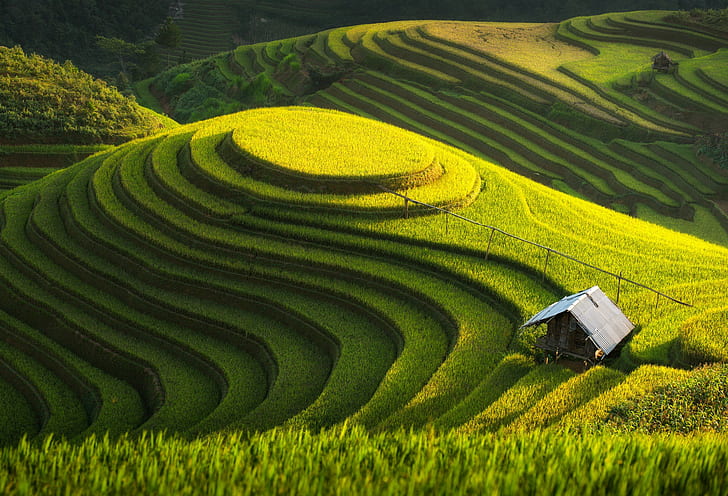
This migration from the country to the city, the Chinese claim, will release another 5.8 million hectares of land for food production, an area equivalent to 4.2% of China’s cropland in 2015. Consequently the Chinese claim that food production, even off these low quality lands will increase in China by 3.1% to 4.2% by 2050 compared to 2015.
Science in the future will not be standing still.
The prospect of new discoveries and innovation in science continuing even accelerating agriculture’s capacity to increase production and keep pace with the ever increasing population, will only happen if the governments of the world increase the funds they make available for research and development (R & D). Tax dollars are the people’s money and the people must demand a say in where the money is spent.
The return on investment can be massive if we produce the food the world will certainly want.
Genetic Modification.
The very mention of genetic modification (GM) raises the temperature, the hackles and the ire of many, mainly because of the fear generated by activists predicting Frankenstein crops and animals which are totally without foundation in fact. Many don’t realise the contribution GM technology already makes, much of it not in food production but in medicine, keeping people alive, including:
- vaccines
- antivenoms
- bacteria derived toxins
- Immunoglobulins
- monoclonal antibodies
- allergens
- blood products and clotting factors
- hormones such as insulin, growth hormone,
- enzymes such as pancreatins
- heparins.
GM crops have been around for forty years and they have raised production in some cases many fold. During that time there has not been any evidence that has shown a deleterious or harmful effect on either man or animals or the environment during that time, none.
Some products have been abandoned it is true and that is the very purpose and nature of good science.
Scientists within organisations with the same views and ethics of the broader community develop GM technology. Claims that these scientists would be party to launching harmful food on the people of the world is ridiculous, ludicrous, simply because it would mean that by so doing, they would harm their own loved ones.
‘Winds of Change’.
It is well known that many parts of Africa struggle to grow enough food for their ever growing population. The forecasts are that population growth will accelerate in Africa in the future. Nigeria for instance, is predicted to have a larger population than China by 2100 with 791 million people , it will be the second most populous nation in the world only topped by India with 1.01 billion.
Since the ‘winds of change’ swept through Africa in the fifties and sixties there have been problems with insufficient food in many parts of that continent.
Scientists in Nigeria have just made a major contribution to improving the diets and welfare of all Africans by releasing a genetically modified cow pea which is resistant to the borer Maruca vitrata which has been known to reduce yield by as much as 80%.
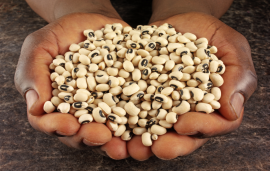 This important food supplies much needed thiamine and iron as well as protein in the diet and this GM technology will help Nigeria fight its constant battle with malnutrition, especially among the young.
This important food supplies much needed thiamine and iron as well as protein in the diet and this GM technology will help Nigeria fight its constant battle with malnutrition, especially among the young.
There are other saving as well, Nigeria, if all goes well, will no longer have to import, every year, up to 20% of the cow peas it needs.
Omega-3 oil.
 Omega-3 oil has been known for a long time to be beneficial in our diet. The only source has been from wild, oily fish, now that has all changed, the CSIRO and the GRDC together with Nuseed in Australia, have developed an Omega-3 Canola, which is now being grown around the world. One hectare of canola replaces the oil from 10 tonnes of wild fish. The world-wide benefits from GM technology, like this one saving the wild fish stocks from over fishing, seldom make the main stream press.
Omega-3 oil has been known for a long time to be beneficial in our diet. The only source has been from wild, oily fish, now that has all changed, the CSIRO and the GRDC together with Nuseed in Australia, have developed an Omega-3 Canola, which is now being grown around the world. One hectare of canola replaces the oil from 10 tonnes of wild fish. The world-wide benefits from GM technology, like this one saving the wild fish stocks from over fishing, seldom make the main stream press.
GM North Atlantic Salmon.
The consumption of fish per head of population, world wide, has more than doubled in the last sixty years. In 1961 the average consumption per head was 9kg and in 2018 it was 20.5kg.
Global fish production was estimated to have reached 179 million tons in 2018. Total fish production is predicted to increase to 204 million tons by 2030 and consumption per head to increase 1kg.
Currently fish farms supply 52% of the fish for human consumption and this is forecast to increase. In fact it has to increase because wild fish stocks are at best being maintained and at worst being depleted by ocean harvesting, mainly by communist China. With their own waters depleted China’s fishing fleets are ranging far and wide in search of catch.
Consequently the global wild fish catch is increasing, up just 7% in the last decade. The challenge for the fish industry is to provide enough fish for the ever increasing demand and not obliterate the natural wild fish stocks. The global interest and the investment in fish farming, particularly in R & D is increasing.
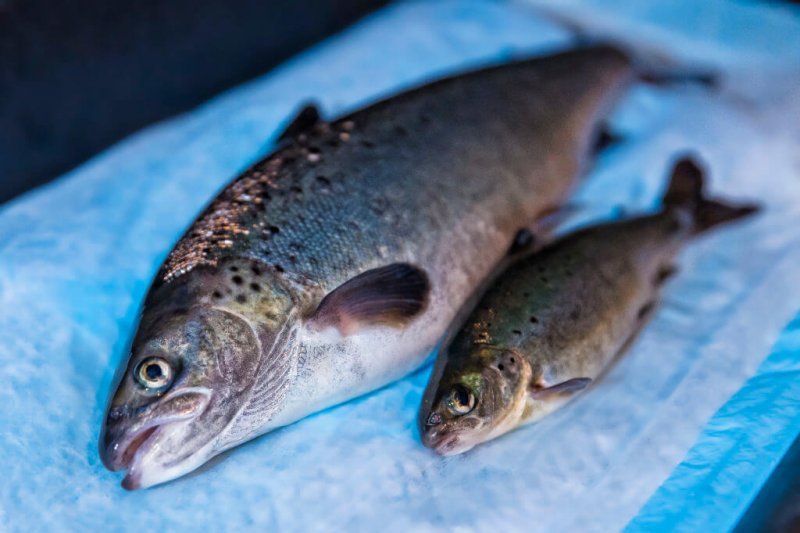 For example in the 1990s two scientists genetically engineered the Atlantic salmon to grow twice as quickly as the conventional salmon while consuming less food.
For example in the 1990s two scientists genetically engineered the Atlantic salmon to grow twice as quickly as the conventional salmon while consuming less food.
That GE salmon has been on sale in Canada for a number of years and the producers have recently overcome the last hurdle to enable the GE North Atlantic salmon to be sold in America.
The time consuming debate on labeling was with those who catch the rapidly declining stocks of wild North Atlantic Salmon and with some of the regulators. Now resolved GE North Atlantic Salmon are being sold in Canada the USA and shortly they will be sold in Brazil.
There is no doubt that GE or GM or GMO (genetically modified organism) fish, of which some claim there are already about 20 species developed or under development will make a major contribution to the ever increasing world-wide demand for food and protein.
One of the most important factors breeding GM fish and all animals both GM and non-GM is the feed conversion rate or FCR that can be achieved. The FCR is how many grams of food it takes to produce a gram of weight in the animal or fish.
Pigs, for instance, have a feed conversion rate (FCR) of about 3 to 1. That means for every 3 grams or kilos of feed consumed by the pig it grows 1 gram or kilo. Cattle have an FCR of 5 – 7 to 1 , so they are not as good as the pig at converting food into meat.
The GM salmon has a FCR of 1.2 to 1 and a new GE trout has an FCR of 1 to 1. That seems impossible to me but that is what they have done. The sustainability of the fish farming industry and so the feeding of the ever growing population is greatly improved by gene technology.
The debate will continue and no doubt rage at times, what we must all remember is that compromise may be needed if future generations can live as well as we do now.
Scientist in America developed a GM potato which provides 42% of a child’s daily needs for vitamin A and 34% of the child’s daily needs for vitamin E all from just one 150-gram serve. Women of reproductive age get the same benefits. That is a huge step forward for the Developing World.

Twenty years after its invention and after many thousands of people have died from a Vitamin A deficiency, Golden Rice looks like it will finally be produced in the Bangladesh and the Philippines. It will save millions of people, mainly children from premature death, blindness and loss of their immune system.
I will never understand Greenpeace and others and their fight to never allow this life saving rice to be grown. Their nasty rumours and down right lies have now been overcome. Twenty years have been wasted in bringing this potentially life saving plant into production.
CRISPR technology.
I think CRISPR technology will answer more of the impending challenges of feeding more people off less arable land than will GE.
What is CRISPR? : The essence of CRISPR is simple: it’s a way of finding a specific bit of DNA inside a cell. After that, the next step in CRISPR gene editing is usually to alter that piece of DNA. However, CRISPR has also been adapted to do other things too, such as turning genes on or off without altering their sequence.
There were ways to edit the genomes of some plants and animals before the CRISPR method was unveiled in 2012 but it took years and cost hundreds of thousands of dollars. CRISPR has made it cheap and easy.
Gene technology of one kind or another is obviously going to play a major part in answering the inevitable food production challenges that are heading our way in the next seventy years or so. Less arable land, changes in rainfall patterns whether they be caused by anthropogenic climate change or not doesn’t really matter, the people will have to be fed.
This is where CRISPR or gene editing technology, I think, will come into its own. Making plants resistant not only to insects but pathogens. Another area which is showing great promise for CRISPR is creating plants that use less water and even more exciting plants cereals that can use saline water and need less fertilizer. Plants that can convert sunshine better and so grow quicker, maybe enabling multiple crops in a season. Disease control without chemicals, so important because so many currently vital crop protection chemicals are derived wholly or in part from the petro chemical industry.
One of the great successes in CRISPR application has been with tomatoes. Remember this isn’t achieved by transferring genes from another entity it is just changing the plants susceptibility to all manner of diseases like botrytis and in some cases, like golden canola, getting the plant to produce better nutrition.
 Now they have gone a step further and removed the need for constant pruning to maximise yield and they have done that as well as bringing the harvest date forward to an amazing 5 weeks. It’s a great story and one of many around for this technology.
Now they have gone a step further and removed the need for constant pruning to maximise yield and they have done that as well as bringing the harvest date forward to an amazing 5 weeks. It’s a great story and one of many around for this technology.
What can ALL Australian governments do to meet the challenge facing agriculture and the fisheries of the future in Australia?
Fix the Roads.
First and foremost it will be a major challenge for agriculture to get both state and federal governments to recognise that Australia has got a major roll in global food production in the future — but it will not happen unless they embark on long term strategic planning and turn that planning into action.
Holding a conference in Sydney and calling it the Global Food Forum means nothing to the man and woman on the land when their truckload of stock or grain comes to grief on yet another poor, narrow and inadequate road.
Governments around Australia have for too long ignored the fundamental needs of agriculture for a highway system that works and is cost effective. Without better highways and roads agriculture cannot grow.
Good and at one time efficient railway systems have been allowed decay or have been deliberately and systematically dismembered by all state governments. They have done it with no consultation and with little thought for agriculture for which they were originally built. The result is that agriculture has been driven into using bigger and bigger trucks on roads which are demonstrably old and in poor condition and not fit for purpose.
All states need highways that can get farm produce, food, from the farm to the city quickly and efficiently.
Water – Harvest it – Move it.
Australia is not a dry continent, we have just lost our ability to harvest water and transport it to the places where it is most needed.
If water was moved from or harvested in the north of Queensland to the black soil country in that state and NSW, the production of food in this country would dramatically increase. There is almost nothing, nothing that cannot be grown in that vast region.
The same goes for Western Australia, all that state needs is water. We have had the late Ernie’s (Bridge’s) pipe dream and Colin’s ditch and many other moves to move water from the North to the agricultural areas.
I have watched the Fitzroy River in flood for months, goodness knows how many Sydney Harbours ran out into the Indian Ocean.
I have grown wheat in a dry year and watched it die before maturity. We have the answers to these challenges, it is about time we used them.
Make food Processing an industry to be proud of again.
 We cannot continue to base our agricultural exports on produce to which we don’t add value and at one and the same time import food to which value has been added. We import potato chips from Europe and South Africa – how silly is that? We import pasta and export Duram wheat. I know! The amount of food we are importing is alarming and going up every year. Why is that when there is nothing I can think of that we cannot produce in this country? We did once upon a time, to find food from another country was unusual and usually a luxury item, now it is the norm and ever increasingly so.
We cannot continue to base our agricultural exports on produce to which we don’t add value and at one and the same time import food to which value has been added. We import potato chips from Europe and South Africa – how silly is that? We import pasta and export Duram wheat. I know! The amount of food we are importing is alarming and going up every year. Why is that when there is nothing I can think of that we cannot produce in this country? We did once upon a time, to find food from another country was unusual and usually a luxury item, now it is the norm and ever increasingly so.
If we are to be great food traders again our food processors need cheap power and good roads or rail to get their produce to well organised ports.
Coles, Woolworths and IGA.
 The big three need to tell us why they scour the world for the cheapest food they can find, often at the expense of Australian producers. The farmers and the processors in Australia need their support – not just in trendy TV ads but in everything.
The big three need to tell us why they scour the world for the cheapest food they can find, often at the expense of Australian producers. The farmers and the processors in Australia need their support – not just in trendy TV ads but in everything.
If ALDI becomes a force all over Australia we need to recognise that most of their food, apart from fresh food, is imported from the EU and mainly Germany – the trade must be reciprocal – Germany must take Australian produce – fairs fair.
Zero Carbon by When – 2050? -2035?
Nobody knows by when and nobody knows what it will cost. That is the world we live in.
According to the Royal Society it seem unlikely that increased levels of CO² to 550ppm will have any effect on crop yields of many of the crops important for harvestable food, known as the C4 group. So there is unlikely to be any benefit to food producers from climate change as it seems the world will rush headlong into carbon zero by 2050.
What farmers will almost certainly be challenged by is this rush to electrify everything. I have no idea and I don’t think anyone else has the foggiest idea what this will mean for agriculture – what will the change cost? Can today’s big trucks and huge tractors be electrified and presuming they can – what will it cost to change over?
Rural debt in Australia is increasing at about $1 billion a year and the real price of many crops like wheat have been in decline since the abolition of the Corn Laws in England in 1846. So your guess is as good as mine on prices producers will receive to pay for change.
Cheerio.


